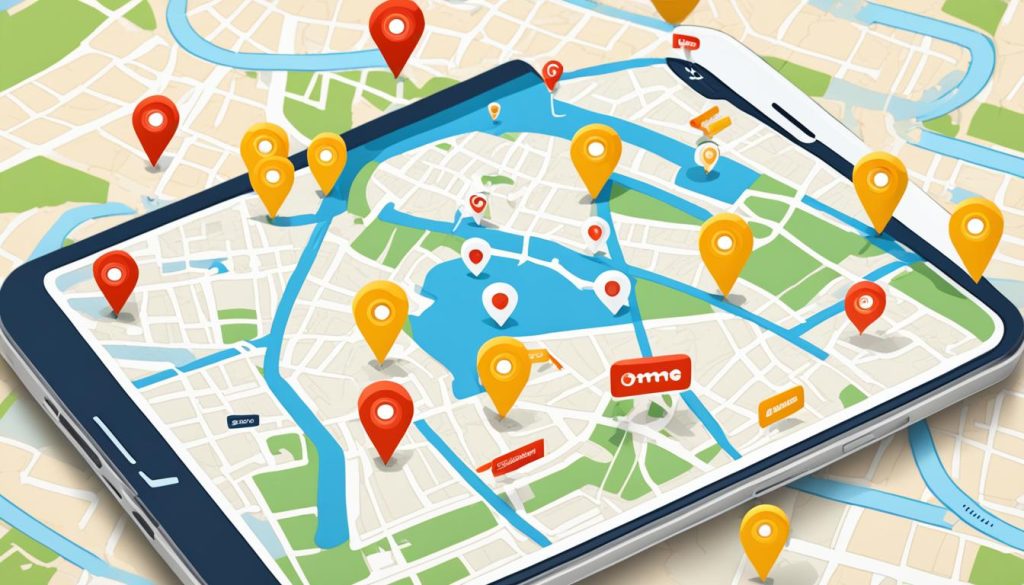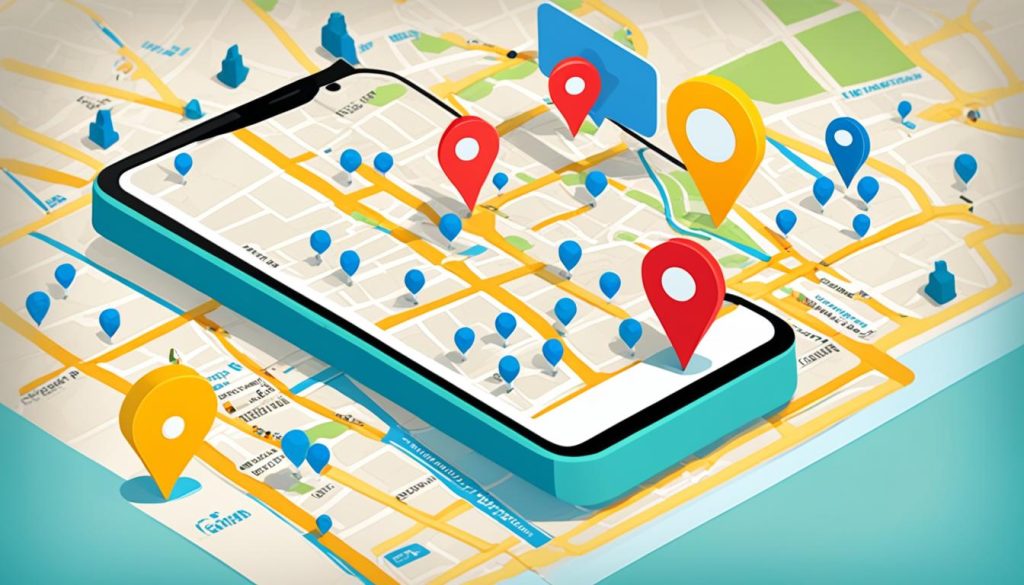Address
304 North Cardinal St.
Dorchester Center, MA 02124
Work Hours
Monday to Friday: 7AM - 7PM
Weekend: 10AM - 5PM
Address
304 North Cardinal St.
Dorchester Center, MA 02124
Work Hours
Monday to Friday: 7AM - 7PM
Weekend: 10AM - 5PM

In today’s digital landscape, the importance of geo-tagging cannot be overstated for local businesses. By adding geographical metadata to their digital content, companies can significantly enhance their visibility in search engine results and build trust with potential customers. This article explores the benefits of geo-tagging images for Google Business Profiles and provides a step-by-step guide on how to effectively implement this strategy.
Geo-tagging, a powerful digital technique, refers to the process of embedding geographical metadata into various media files, such as photographs and videos. This metadata typically includes latitude and longitude coordinates, as well as altitude, distance, accuracy data, place names, and other valuable location-specific information.
When you capture an image or record a video, the geo-tagging process allows your device to automatically embed the precise geographical coordinates and other location-based details into the file’s EXIF (Exchangeable Image File Format) data. This spatial metadata can then be leveraged to enhance your local SEO efforts, improve the visibility of your Google Business Profile, and provide customers with a more enriched and contextual experience.
The core of the geo-tagging process involves recording the precise latitude, longitude, and altitude data associated with the location where your media files were captured. This location-specific information is crucial for establishing the geographical context and relevance of your business, products, or services. By accurately embedding this geospatial data, you can strengthen the connection between your online presence and the physical world, ultimately driving more qualified leads and conversions.
| Geo-tagging Terminology | Definition |
|---|---|
| Geotag | A tag or label that contains geographical information, such as latitude, longitude, and altitude. |
| Geotagging | The process of adding geographical identification metadata to various media like photographs, videos, websites, or RSS feeds. |
| Geo-referencing | The process of assigning geographic coordinates (such as latitude and longitude) to a digital image or other data. |
| Spatial Metadata | Additional information about the geographical location and context of digital content. |
| Geographic Coordinates | A pair of numeric values expressing the north-south position (latitude) and the east-west position (longitude) of a point on the Earth’s surface. |
Geo-tagging is an essential strategy for businesses looking to enhance their visibility in local search results. By providing Google with accurate location data through geo-tagged images, companies can significantly improve their relevance and trustworthiness for local queries. This not only helps them rank higher in search engine results but also builds confidence among potential customers searching for their products or services.
When a business uploads geo-tagged images to their online platforms, they are giving search engines like Google clear and reliable information about their physical location. This location-specific data helps the search engines better understand the business’s relevance to local searches, leading to improved rankings in location-based queries. As a result, the business becomes more easily discoverable by consumers searching for products or services in their immediate vicinity.
Beyond improving visibility, geo-tagging also helps to authenticate a business’s physical location. By providing precise latitude, longitude, and altitude coordinates, businesses can demonstrate to Google and their customers that they have a genuine, fixed address. This level of location transparency can significantly enhance trust and credibility, making the business appear more reliable and trustworthy in the eyes of potential clients.
Geo-tagging can significantly enhance the effectiveness of your Google Business Profile (GBP) by providing Google with reliable, location-specific information about your business. When you upload geo-tagged images to your GBP, you are giving Google a clear understanding of your business’s physical location, which can bolster your visibility in local search results.
By incorporating geo-tagged images into your GBP, you are empowering Google with accurate location data about your business. This spatial metadata, including latitude, longitude, and altitude coordinates, as well as other location-based information, helps Google better comprehend and validate the physical address of your establishment. This, in turn, can improve your ranking in local search engine results, ensuring that potential customers in your area can easily find and engage with your business.
The use of geo-tagged images in your GBP can also have a positive impact on customer engagement and trust. When users see that your business has provided detailed location data through geo-tagging, it demonstrates your commitment to transparency and authenticity. This can increase the confidence that potential customers have in your business, making them more likely to visit your physical location or interact with your online presence.
Before delving into the geo-tagging process, it’s crucial to ensure that the GPS functionality on your device is enabled. This will allow your camera or smartphone to automatically embed the latitude, longitude, and altitude data into the EXIF metadata of your photos as you capture them.
When taking photos for geo-tagging, be mindful to capture images that are relevant to your business and its location. This could include exterior shots of your premises, product displays, or even employees engaging with customers. The key is to provide Google with a clear visual representation of your business’s geographic coordinates and the activities happening at your physical location.
While many modern cameras and smartphones automatically geo-tag photos during the capture process, there are also a variety of standalone geo-tagging tools available that can help you add location data to your images. Some popular options include Exif Editor, GeoSetter, and PhotoME, which allow you to manually input or refine the geographic coordinates associated with your photos.
Once you have captured and geo-tagged your business’s photos, the final step is to upload them to your Google My Business (GMB) profile. This will ensure that the location-specific data is directly integrated into your online business listing, enhancing its visibility and relevance in local search results.
In the world of geo-tagging, there are several popular tools available that can simplify the process of adding location data to your photos. Whether you prefer online platforms or standalone applications, these tools offer a range of features to help you efficiently geo-tag your business’s visual assets.
One of the most widely used geo-tagging tools is Google Maps, which allows you to easily add location data to your images right within the platform. By utilising the geotag, gps tagging, and geographic coordinates features, you can quickly assign precise spatial metadata to your photos, ensuring they are accurately positioned on a virtual map.
| Tool | Description | Key Features |
|---|---|---|
| Exif Editor | A desktop application that enables users to view and edit the location tagging and geo-referencing data embedded within image files. |
|
| PhotoME | An open-source tool that specialises in viewing, editing, and managing the EXIF metadata associated with digital photos, including mapping coordinates and location intelligence. |
|
| GeoSetter | A free geo-tagging application that allows users to add geographic coordinates and other location-based data to their digital photos and videos. |
|
These are just a few examples of the popular geo-tagging tools available to businesses looking to enhance their local SEO efforts through the strategic use of location-based metadata. By incorporating these tools into your content creation workflow, you can streamline the process of adding valuable location tagging and geo-referencing information to your visual assets, ultimately improving their visibility and relevance in local search results.
Once you have geo-tagged your business’s photos, it’s crucial to upload them to the appropriate platforms and directories to maximise their impact on your local SEO efforts. Strategically positioning your geo-tagged images across key online channels can significantly enhance your visibility in local search results and build trust with potential customers.
Your Google My Business (GMB) listing is the primary platform where you should upload geo-tagged images of your business. By adding location-specific photos to your GMB profile, you are providing Google with valuable information about your physical location, which can improve your ranking in local search results and create a more engaging and trustworthy online presence.
Incorporating geo-tagged images into your business website and blog content can further reinforce your location-based authority. Embedding these geo-referenced photos throughout your online assets, such as your homepage, location pages, and relevant blog posts, can help your customers visualise your business’s physical presence and solidify your standing as a local industry leader.
Sharing geo-tagged images on your business’s social media channels, such as Facebook, Instagram, and Twitter, can help you reach a wider audience and showcase your local presence. By consistently posting geo-referenced photos, you can build a stronger connection with your target community and demonstrate your business’s commitment to serving its local clientele.
Uploading geo-tagged images to your business’s listings on online directories and citation sites, such as Yelp, TripAdvisor, and Foursquare, can further reinforce your location-based credibility. These geo-referenced photos can help your business stand out from competitors, attract more local customers, and improve your overall online visibility.

Geo-tagging can also play an important role in your customer review strategy. By encouraging your customers to take and upload geo-tagged photos when leaving reviews, you can further strengthen the location-specific signals associated with your business.
Prompt your customers to capture and upload geo-tagged photos of their experiences at your establishment. This not only helps to visually showcase your location but also provides search engines with valuable data about the specific geographic context of the reviews. Customers are often eager to share their experiences through photos, so make it easy for them to do so by providing clear instructions on how to enable geo-tagging on their devices.
User-generated content, such as geo-tagged customer photos, can be a powerful asset for your local geotagging, location taggingtagging> and geo-referencing efforts. By incorporating these visually rich, spatial metadatametadata>-enhanced reviews into your online presence, you can build trust and credibility with potential customers searching for businesses in your area. Showcase these geographic coordinatescoordinates>-backed reviews on your GPS taggingtagging> enabled geospatial datadata> platforms, such as your mapping coordinatescoordinates>-integrated location intelligenceintelligence> website and Google My BusinessMy Business> listing.
When implementing a geo-tagging strategy for your business, it’s crucial to maintain consistency in the location data you provide across your online profiles and media assets. This approach ensures that search engines and customers receive a cohesive and accurate representation of your business’s geographic coordinates, geospatial data, and location intelligence.
The specific geo-tagging strategy you employ should be tailored to the unique needs and characteristics of your business. For example, a brick-and-mortar retail store may prioritise geotagging its storefront and product images, while a service-based business might focus on location tagging photos from client sites or company events.
Regardless of your business type, the key is to ensure that the spatial metadata and geographic coordinates you provide accurately reflect your company’s physical presence and operations. This level of consistency will not only enhance your local SEO visibility but also build trust and credibility with your customers.
By diligently managing your geo-referencing and gps tagging efforts, you can create a cohesive online presence that resonates with both search engines and your target audience, ultimately driving more foot traffic and online engagement for your business.
While geo-tagging can provide significant benefits for local SEO and customer engagement, it’s essential to consider the potential privacy implications of this practice. When using geo-tagging, businesses must respect the privacy of their customers and ensure that they are not inadvertently revealing sensitive information about their locations or activities.
One of the key privacy concerns with geo-tagging is the potential for location data to be used to track individuals without their consent. This could be particularly problematic for businesses that serve vulnerable populations, such as children or individuals in sensitive situations. To mitigate these risks, businesses should provide clear and transparent information about their geo-tagging practices and give customers the option to opt-out of having their location data shared.
Additionally, businesses should be mindful of the type of geospatial data they are collecting and how it is being used. For example, while GPS tagging of business locations or landmarks may be beneficial for local intelligence, businesses should avoid collecting or sharing geo-referenced data that could reveal sensitive information about their customers’ personal lives or movements.
By carefully considering the privacy implications of geo-tagging and implementing appropriate safeguards, businesses can reap the benefits of this powerful location tagging technique while respecting the privacy and security of their customers.
Whilst geo-tagging is a highly effective tool for enhancing local SEO performance, it should be implemented as part of a comprehensive, holistic strategy rather than as a standalone tactic. By integrating geo-tagging into a broader local SEO approach, businesses can maximise the benefits and ensure a more cohesive and impactful online presence.
Key elements of a holistic local SEO strategy that complement geo-tagging include optimising Google Business Profile listings, leveraging location-based keywords, building a strong network of local citations and backlinks, and actively managing online customer reviews. By aligning these various tactics, businesses can create a comprehensive and multi-faceted strategy that enhances their visibility, credibility, and engagement with local consumers.
Furthermore, regularly monitoring and analysing the performance of geo-tagged content, as well as other local SEO initiatives, is crucial for fine-tuning the strategy and ensuring continuous improvement. This data-driven approach allows businesses to identify what’s working, what needs refinement, and how to best allocate their resources for maximum impact.
Ultimately, geo-tagging is a powerful tool that should be seamlessly integrated into a holistic local SEO strategy. By adopting this comprehensive approach, businesses can effectively leverage the benefits of geo-tagging to strengthen their online presence, drive more local traffic, and ultimately, convert more customers in their target markets.

In conclusion, geo-tagging is a powerful tool that can significantly enhance the local SEO performance and customer engagement of your Google Business Profile. By embedding geographical metadata into your business’s photos, you can provide search engines with highly detailed and reliable information about your location, which can improve your visibility in local search results and build trust with potential customers.
The process of geo-tagging involves adding latitude, longitude, and altitude data to your digital media files, such as photographs and videos. This location-specific information can be leveraged to boost the relevance and trustworthiness of your business listings, making it easier for potential customers to find and engage with your products or services.
Whether you’re looking to enhance your local SEO strategy, provide more accurate information about your business’s physical presence, or encourage user-generated content that reinforces your brand’s location, geo-tagging is an essential tool to consider. By integrating geo-tagging into your holistic digital marketing approach, you can unlock a range of benefits that will ultimately drive increased visibility, engagement, and conversions for your company.